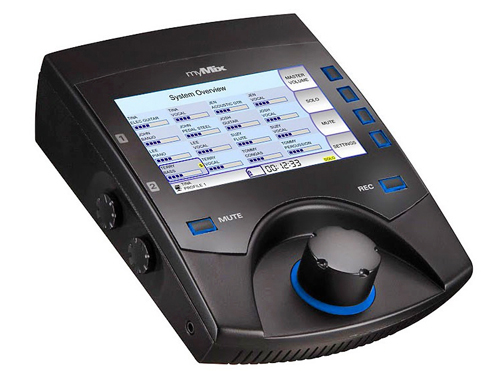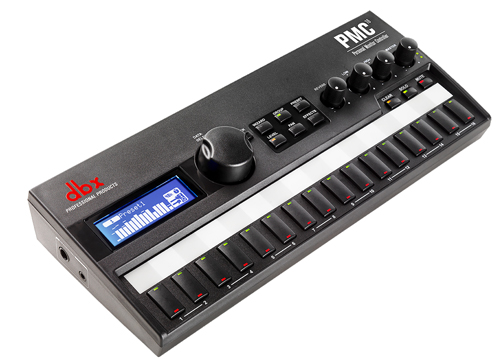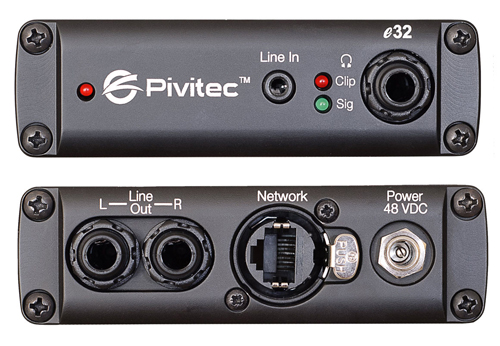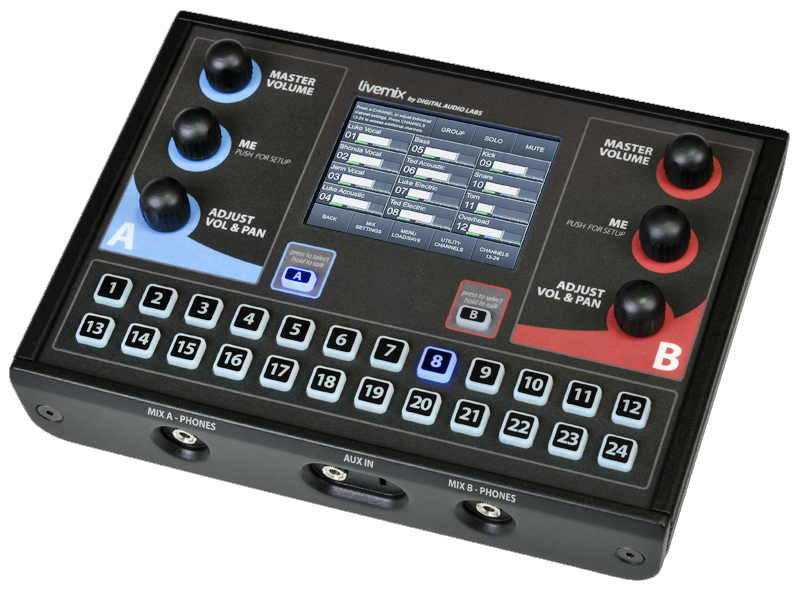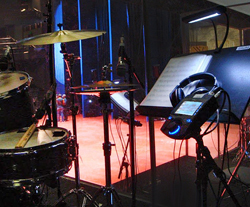
Movek myMix. Though it’s been out for a few years, Movek has added several features to myMix that make it even more versatile. New input modules accommodate up to 32 mixers on the network, and each mixer can select up to 16 of those.
A new network control module makes set up and configuration a lot faster using nothing more than a browser. When connected to the internet, you can even manage mixer configurations from anywhere in the world.
The mixer itself has a high-resolution backlit LCD monitor showing current status and inputs. A single large knob makes quick work of building mixes, setting up the per-channel EQ, reverb and panning when used in conjunction with four buttons on the side. Each mixer is also a multi-track recorder, writing .wav files to an SD Card. Input options include analog and ADAT.
dbx Professional PMC16. This system offers plenty of conventional functionality along with some pretty cool features that will appeal to anyone invested in the Harman Pro product line. The system runs on BLU link, which means it will interface with the BSS Soundweb London line of processors.
Channel linking, grouping and multi-select are all supported. Each mixer also comes with Lexicon reverb and dbx PeakStop limiting.
The obligatory 1/4-in and 1/8-in headphone outs are included, as well as a pair of TRS and XLR mono or stereo outputs. The TR1616 analog to BLU link input module features 16 dbx mic preamps, and 16 XLR outputs, providing an analog split plus the BLU link digital output. And, this is the only system that can run at either 48 or 96 kHz.
Elite Core PM-16. In some ways, this is a “new and improved” version of the Aviom PM-16ii. Instead of a single encoder that performs many tasks, Elite Core placed 16 volume and 16 channel knobs on the surface corresponding to the 16 input channels, and 16 signal present LEDs make it easy to verify everything is working.
A 3-band graphic EQ handles tone shaping on the output, joined by a smooth sounding 1-knob compressor and a built-in ambient mic. There are 1/4-in and 1/8-in jacks for ear buds, and a set of 1/4-in TRS jacks to drive a wireless transmitter or powered wedge.
The all-steel housing looks like it will survive more than one drop to the floor, and the headphone amp is very high output. Input options are analog and ADAT at present.
Pivitec e32. Based around Ethernet AVB protocols, this approach is unique. The mixer is a small box with no controls, just a 1/4-in headphone jack, a 1/8-in stereo line in, a pair of 1/4-in TRS line out jacks, and an RJ45 network connector.
Each mixer is controlled by an iPad or iPhone, all wirelessly. As the name suggests, the e32 can mix up to 32 channels at once. Multiple 16-channel analog input modules can be added to build larger networks.
The iOS interface is quite smart looking, presenting the user with 2 banks of 16 channels. A page select button access the other 16, and a custom layer lets the user put the most-used channels on the surface at all times. The iOS app supports both iPads and iPhones in both landscape and portrait orientation. Newly added are 16 mix snapshots that can be recalled sequentially or random.
Digital Audio Labs Livemix. While this company is no newcomer to digital audio, the Livemix is the newest entry in this field, with the system scheduled to ship this fall. A number of unique features set it apart, including the fact that each surface controls two mixes, and those mixes can be up to 24 channels.
Each channel has full EQ, compression and reverb controls, along with presets to make those functions easy for novices to use. A built-in screen makes it easy to remember which channel is which, as each channel can be named.
A “Me” knob can be configured to control the musician’s inputs for easy access, and a cool “Mirror Mix” mode lets any surface on the network control any mix. That would be especially useful for a FOH engineer or MD to help musicians who are struggling with their mix.
Each mixer can also record the stereo mix to a USB drive. Finally, the stereo mix is sent back to the input module where it’s available in the rack on XLR outputs to drive wireless transmitters—very cool.
Mike Sessler has worked with audio and production for more than 20 years. Currently he is the technical director of Coast Hills Community Church in Aliso Viejo, CA. In addition, he’s the author of the blog Church Tech Arts (www.churchtecharts.org) that is also featured on ProSoundWeb.

